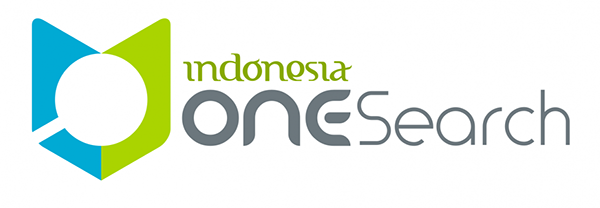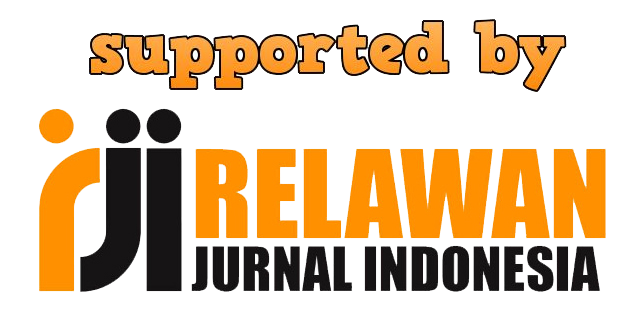Safety, Quality, and Religion on the Consumption of Halal Cosmetic Products: Views of Female Muslim University-Students
DOI:
https://doi.org/10.23887/jish.v11i2.39251Keywords:
Halal Cosmetics, Halal Understanding, Muslim Consumers, Female Muslims, Muslim YouthsAbstract
The awareness of halal cosmetics has been rising among Muslim consumers, particularly female youths in Indonesia, for years. However, it has always been contentious whether this trend is stimulated by the increasing religiosity and Islamic religious understanding among the populace. The study aims to investigate the reasons behind the consumption and its links to the understanding of halal cosmetic products among female Muslim university students, particularly those living in Yogyakarta. For the study, 105 female Muslim students were questioned via a google-form survey, followed by in-depth qualitative phone interviews with 12 of them to gather the required data. The study presents that even though valuing more the safety, quality, and Halal certification status of cosmetic products they have been consuming, female Muslim students prefer to put first the two factors before the third one, followed by others, including the price, adverts, friends’ recommendation. It is revealed that they have shown good knowledge and understanding to look out carefully the ingredients, how to use and safety warning of cosmetic products rather than simply choosing them for religious reasons. Various understanding regarding the halal certification of cosmetic products and its social and religious implications for Muslims have played essential roles in influencing the preference of these female Muslim students.
References
Ali, M. (2016). Konsep Makanan Halal dalam Tinjauan Syariah dan Tanggung Jawab Produk Atas Produsen Industri Halal. AHKAM : Jurnal Ilmu Syariah, 16(2), 291–306. https://doi.org/10.15408/ajis.v16i2.4459
Balques, A. (2017). Analisis sikap, norma subjektif, dan niat beli produk kosmetik halal pada konsumen muslimah di Surabaya (Undergrduate Thesis). Institut Teknologi Sepuluh Nopember.
Briliana, V., & Mursito, N. (2017). Exploring antecedents and consequences of Indonesian Muslim youths’ attitude towards halal cosmetic products: A case study in Jakarta. Asia Pacific Management Review, 22(4), 176–184. https://doi.org/10.1016/j.apmrv.2017.07.012
Damanik, B. T., Etnawati, K., & Padmawati, R. S. (2012). Persepsi Remaja Putri di Kota Ambon Tentang Risiko Terpapar Kosmetik Berbahaya dan Perilakunya dalam Memilih dan Menggunakan Kosmetik. Berita Kedokteran Masyarakat, 27(1), 1–9.
Endah, N. H. (2014). Perilaku Pembelian Kosmetik Berlabel Halal Oleh Konsumen Indonesia. Jurnal Ekonomi Dan Pembangunan, 22(1), 11–25.
Faidah, M. (2017). Sertifikasi Halal di Indonesia dari Civil Society menuju Relasi Kuasa antara Negara dan Agama. ISLAMICA: Jurnal Studi Keislaman, 11(2), 449. https://doi.org/10.15642/islamica.2017.11.2.449-476
Hasbiansyah, O. (2008). Pendekatan Fenomenologi: Pengantar Praktik Penelitian dalam Ilmu Sosial dan Komunikasi. Mediator: Jurnal Komunikasi, 9(1), 163–180. https://doi.org/10.29313/mediator.v9i1.1146
Hashim, A. J. bt C. M., & Musa, R. (2014). Factors Influencing Attitude towards Halal Cosmetic among Young Adult Urban Muslim Women: A Focus Group Analysis. Procedia - Social and Behavioral Sciences, 130, 129–134. https://doi.org/10.1016/j.sbspro.2014.04.016
Hashim, P., & Mat Hashim, D. Z. (2013). Review of Cosmetic and Personal Care Perspective and Detection of Ingredient: Halal Perspective And Detection Of Ingredient. Pertanika Journal of Science and Technology, 21(2), 281–292.
Hasibuan, S. W., Nasution, Y., & Siregar, S. (2019). The Effect of Health and Religious Beliefs on Consumer Consciousness of Using Halal Cosmetics. Budapest International Research and Critics Institute (BIRCI-Journal) : Humanities and Social Sciences, 2(3), 239–249. https://doi.org/10.33258/birci.v2i3.413
Kahija, YH. la. (2017). Penelitian Fenomenologis: Jalan Memahami Pengalaman Hidup. Kanisius.
Kemenperin RI. (2018). Kinerja Industri Kosmetik Nasional Lampaui Pertumbuhan Ekonomi. Https://Kemenperin.Go.Id/Artikel/19435/Kinerja-Industri-Kosmetik-Nasional-Lampaui-Pertumbuhan-Ekonomi.
Larasati, A., Hati, S. R. H., & Safira, A. (2018). Religiusitas dan Pengetahuan Terhadap Sikap dan Intensi Konsumen Muslim untuk Membeli Produk Kosmetik Halal. Esensi: Jurnal Bisnis Dan Manajemen, 8(2). https://doi.org/10.15408/ess.v8i2.7459
Majelis Ulama Indonesia. (2013). Fatwa MUI No. 26 Tahun 2013 tentang Standar Kehalalan Produk Kosmetika dan Penggunanya. Http://Mui.or.Id/Wp-Content/Uploads/Files/Fatwa/No.-26-Standar-Kehalalan-Produk-Dan-Penggunaan-Kosmetika.Pdf.
Mulyadi, M. (2013). Penelitian Kuantitatif dan Kualitatif Serta Pemikiran Dasar Menggabungkannya. Jurnal Studi Komunikasi Dan Media, 15(1), 128. https://doi.org/10.31445/jskm.2011.150106
Nandini, W. (2018). Momentum Kosmetik Lokal Unjuk Gigi. Katadata. Https://Katadata.Co.Id/Ariemega/Infografik/5e9a55d4cfff3/Momentum-Kosmetik-Lokal-Unjuk-Gigi.
Nastiti, N. de, & Perguna, L. A. (2020). Konstruksi Konsumen Muslim Terhadap Labeling Halal (Studi Fenomenologi Penggunaan Kosmetik Halal di Kalangan Mahasiswa Politeknik Negeri Malang. Jurnal Analisa Sosiologi, 9(1). https://doi.org/10.20961/jas.v9i1.37671
Sugiyono. (2019). Metode Penelitian Kuantitatif, Kualitatif, dan R&D. Alfabeta.
Yuswohady, Herdiansyah, I., Fatahillah, F., & Ali, H. (2017). Gen M: Generasi Muslim. Bentang.
Yuswohady, Madyani, D., Herdiansyah, I., & Alim, I. (2014). Marketing to the Middle Class Muslim. Gramedia.
Downloads
Published
Issue
Section
License
Copyright (c) 2022 Talitha Andra Prakasita, Amika Wardana

This work is licensed under a Creative Commons Attribution-ShareAlike 4.0 International License.
Authors who publish with the Jurnal Ilmu Sosial dan Humaniora agree to the following terms:
- Authors retain copyright and grant the journal the right of first publication with the work simultaneously licensed under a Creative Commons Attribution License (CC BY-SA 4.0) that allows others to share the work with an acknowledgment of the work's authorship and initial publication in this journal.
- Authors are able to enter into separate, additional contractual arrangements for the non-exclusive distribution of the journal's published version of the work (e.g., post it to an institutional repository or publish it in a book), with an acknowledgment of its initial publication in this journal.
- Authors are permitted and encouraged to post their work online (e.g., in institutional repositories or on their website) prior to and during the submission process, as it can lead to productive exchanges, as well as earlier and greater citation of published work. (See The Effect of Open Access)


.png)
.png)













